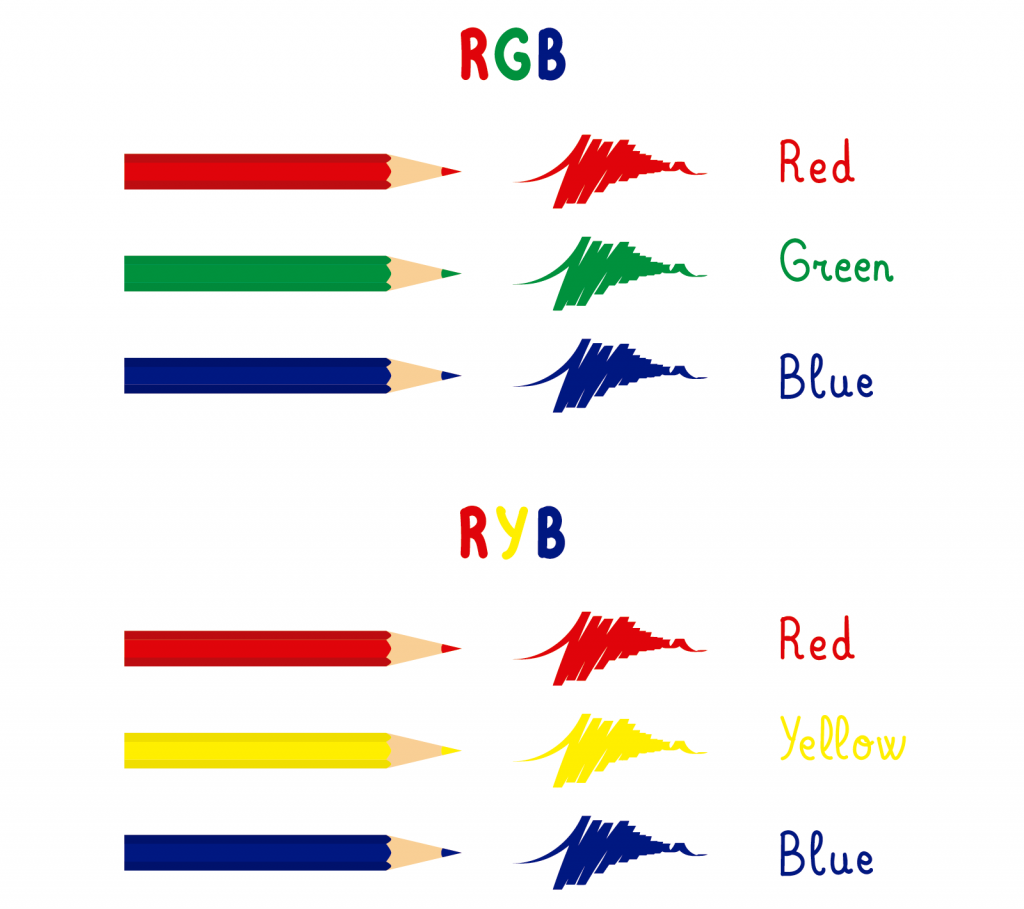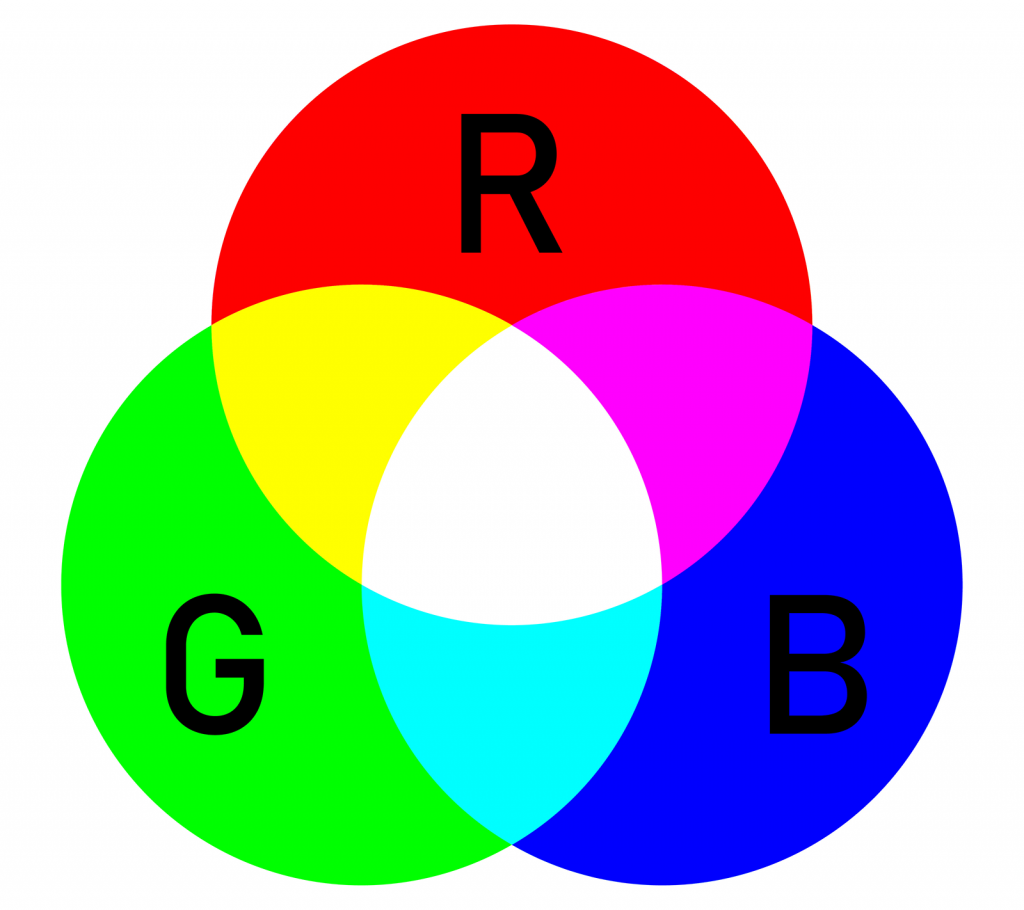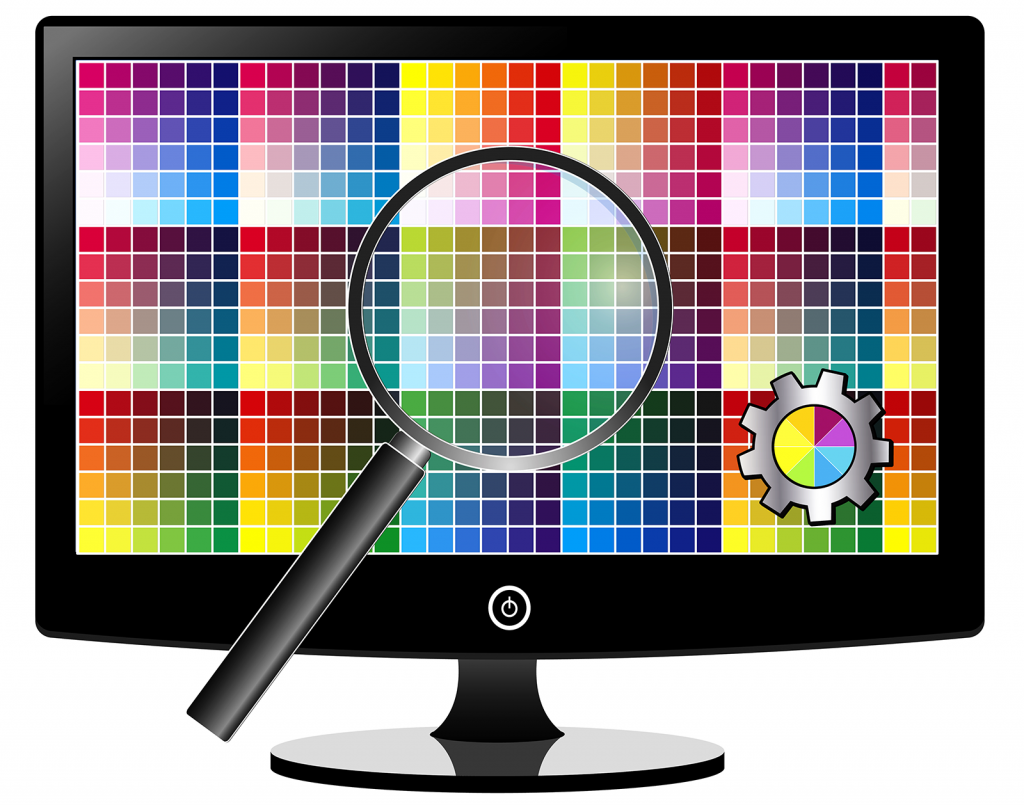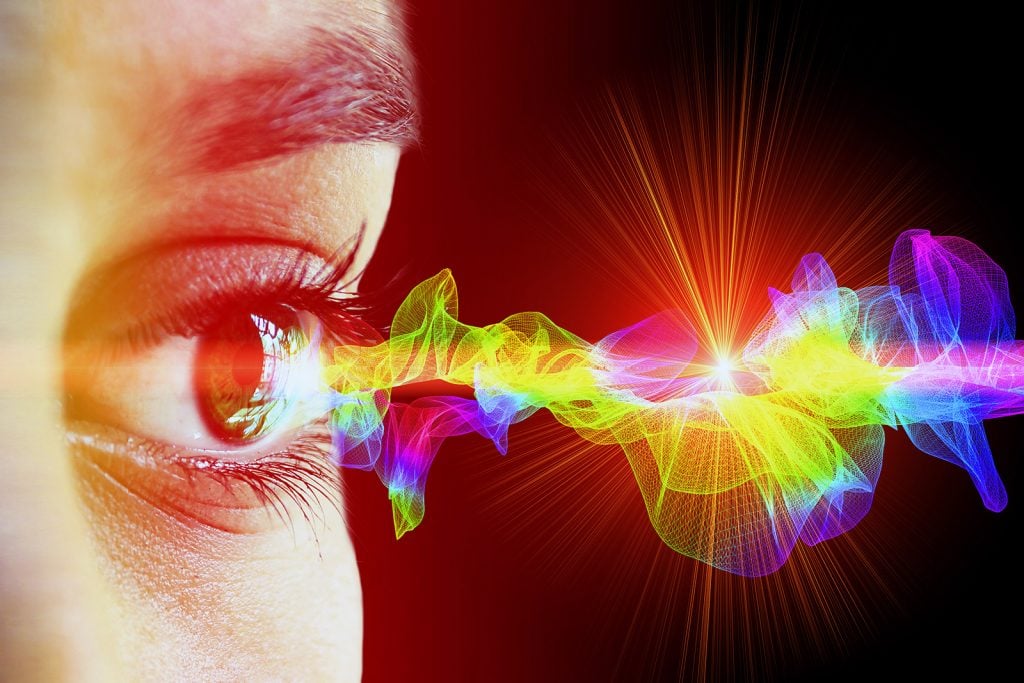
Life was so simple when we were kids. For example, the art teacher in third grade drilled into our heads that the three primary colors are red, blue and yellow. We never questioned it. Why would we? The teacher knows everything. Or does she? Maybe not.
The question of what constitutes primary colors is not as easily answered as many people think. In reality, there are two sets of primary colors that human eyes are capable of dealing with. The question of primary colors has more to do with the medium through which we see those colors. Some media involve reflection while other media rely on sending light directly to the eyes.
Therein lies the difference in primary colors. How you perceive color depends on whether light is being reflected into your eye or your eye is receiving the light directly. In the case of the former, colors are derived by subtracting light. In the case of the latter, they are formed by adding light.
Light Reflecting Off a Surface

What our teachers told us in elementary school about primary colors is based on pigmentation. In other words, you apply a pigmented paint to a white piece of paper and your eye perceives the color of that paint. You can mix different colors on the paper to come up with completely different colors.
What you are seeing is the result of light reflecting off the surface of the paint and into your eye. If you chose a pure blue hue, the surface of the paint would absorb all the colors in the light spectrum except blue. Blue would reflect off the surface, thus causing your eye to perceive that the paint is blue.
We all know that primary colors in the art world are red, yellow and blue (RYB). Again, this is based on pigmentation and light reflection. Combining blue and yellow gives you green. That means the combination of the two pigments absorbs all of the waves of light in the spectrum except green. You see green because the green light reflects off the surface and into your eye.
Now, what would happen if you used a pigmented paint that absorbed all of the colors in the spectrum? Your eye would perceive black. The pigment in black paint absorbs 100% of the visible light in the spectrum. Thus, black is not actually a color. It is the absence of color. Can we do this in the opposite direction? Absolutely.
A pigmented paint that reflects all of the different colors in the light spectrum produces white. This is why white is technically not a color either. It is the presence of all colors, simultaneously reflecting off of a surface.
Because of the way the eye perceives light reflected off of a surface, we can combine the three primary colors of art to produce secondary colors:
- Red + yellow = orange
- Red + blue = purple
- Blue + yellow = green
Mixing Colors by Subtracting (RYB & CMYK)

Science refers to the mixing of primary colors in pigmentation as subtractive color mixing. We can simplify it by saying that we are subtracting colors from the light spectrum. Let’s start with a basic red ink. Based on what was already explained, red ink absorbs all of the colors in the spectrum except red, which gets reflected off the surface.
By absorbing blue and yellow, for example, we are taking blue and yellow out of the equation. The eye does not pick up those two colors because they have been absorbed. They have been subtracted from what your eyes can see. Likewise, combining red and blue subtracts different colors from the spectrum.
This is all due to the way light reflects off of a surface. Believe it or not, even subtractive color mixing isn’t static. For example, have you ever noticed that the dye tablets you put in vinegar to color Easter eggs are actually quite a bit darker than the colored eggs themselves? That’s because the surface of the egg reflects light differently than the undissolved tablets.
Take a piece of white cotton and put some red dye on it. Now apply that same red dye to a piece of white linen. You will end up with two different tints of red because the fabrics reflect light differently. Even your three primary colors of red, yellow and blue look different on different media.
Light Directly to the Eye

Light hitting the eye directly is perceived differently than light reflecting off a surface. Without getting too scientific, it boils down to how light affects photoreceptors in the eyes. Where light reflecting off a surface is altered by that surface, light directly penetrating the eye is more pure, if you will. Visual responses are mapped directly in the absence of reflection. With reflection, they are mapped indirectly.
What does all of this mean in terms of primary colors? It means that when you’re talking about light hitting the eye directly, the three primary colors are red, green and blue. This is why we talk about colors displayed on televisions and cell phone screens in the context of RGB.
Red, green and blue are the three primary colors the human eye naturally maps. Therefore, without surface reflection getting in the way and altering how light is seen, the human eye is able to see color more directly. Mixing the three primary colors in an RGB environment produces the following secondary colors:
- Red + green = yellow
- Red + blue = magenta
- Blue + green = cyan
Our elementary school art teachers never told us this. That’s probably because our brains were not capable of comprehending light waves, the spectrum, visible light and so forth. But now the cat is out of the bag. Now we know that red, yellow and blue are not the only primary colors. Purple, green and orange are not the only secondary colors either.
Mixing Colors by Adding (RGB)

Perhaps the most fascinating aspect of color from direct light waves is how secondary colors are produced. In media where color is the result of light reflection, we produce color by subtracting the wavelengths we don’t want to see. In terms of visible light, we do just the opposite.
Think of it in terms of painting versus watching TV. Painting starts with a white piece of paper. You achieve color by removing the colors you don’t want seen. That’s the subtractive color mixing that takes place with paints. Producing color on your television set works in the opposite direction. This is referred to as additive color mixing.
What color is the screen when the TV is off? It’s black. That means the screen is absorbing all of the visible light that strikes it. Turn your TV on and things suddenly change. Now you are adding light to the screen. You are starting with black and moving toward white. Add blue light and the screen will turn blue. Add blue and red light together and the screen will turn magenta.
Adding different wavelengths is what determines color in an RGB environment. It works because light travels from the TV screen directly to your eyes. It isn’t reflecting off any surface. Therefore, your eyes are getting the pure blue, red and green that create the optimized response in your eyes.
Different Color Profiles

Common sense would dictate that there are fewer variations in color in the RGB environment. After all, sending light directly to the eye offers fewer opportunities for distortion compared to reflecting light off of a surface. Even so, there are different color profiles in the RGB world.
If you’ve got a laptop or desktop computer, go into the settings and find your display type. Most modern operating systems allow users to assign a profile to the display. This is due to the fact that manufacturers offer different types of displays based on their preferred technology.
An LED display utilizes light emitting diodes to apply color to the screen. Depending on the makeup of those LEDs, colors may look slightly different from one display to the next. A color profile is simply a set of instructions that tells a computer operating system the best way to display the colors.
A plasma screen might display colors slightly differently. Again, manufacturers differ in the way they use plasma technology. Color profiles make up for those differences in order to create the most natural looking colors possible.
It Depends Who You Ask

What have we learned from this post? We have learned that defining primary colors really depends on who you ask. Ask an artist who specializes in paint and watercolors. She will tell you the primary colors are red, blue and yellow. Ask a videographer and he will tell you red, green and blue. They are both right. Primary colors change depending on medium.
Having two sets of primary colors is the result of how our eyes perceive color. Such perceptions are the result of how photoreceptors in the eyes respond to reflected light as opposed to direct light. When light is reflected off of a surface, the three primary colors are red, blue and yellow. When light hits the eye directly, the three primary colors are red, green and blue.
They didn’t tell you everything you needed to know in art class, did they? That’s okay. Most of us don’t really care that there are two sets of primary colors, just as long as we can see correctly. We are content to leave all of the technical stuff to those who need to understand it.
I have worked with colors on a daily basis for many years, so this all feels like common knowledge to me, even though I know it most likely isn’t. It thrills me when other people take an interest in colors, and if you learned something new today, then my job here is well done. Thanks for reading.



